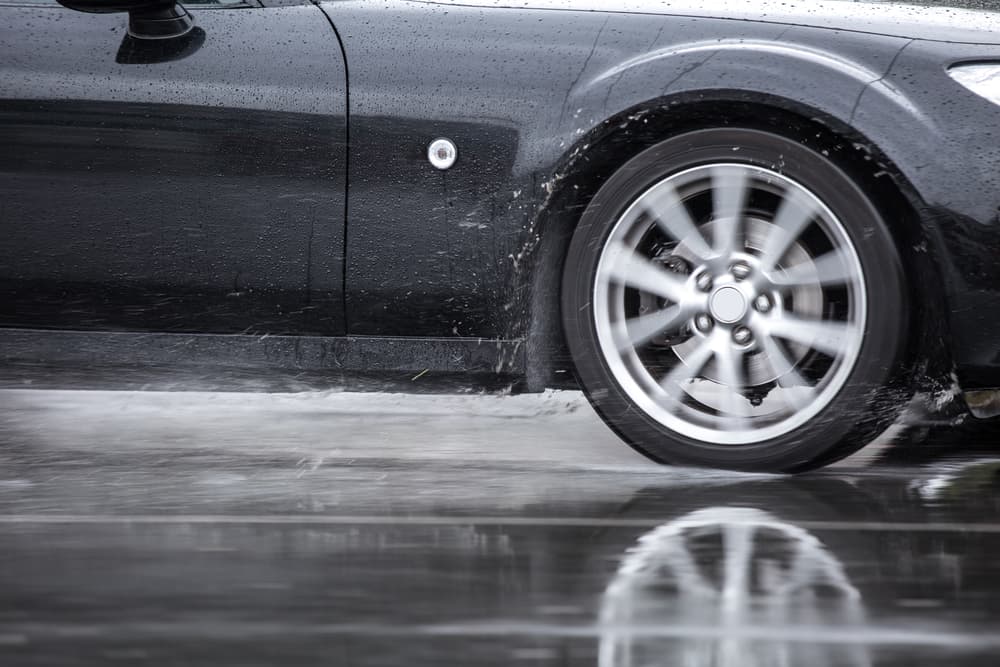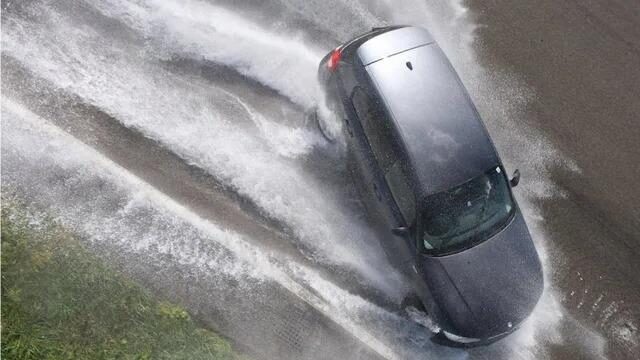aquaplaningAlso water slippery called, occurs when a vehicle loses traction on a wet road because of water between the tires and the road surface collects. The phenomenon can lead to dangerous situations on the road as control of the vehicle is temporarily lost. There are various factors that increase the risk of aquaplaning erhöhen, and it is important to know these in order to take appropriate preventative measures.
Aquaplaning on wet roads
- Tire tread and condition play a crucial role in preventing aquaplaning. Worn or damaged ones Tubes With insufficient tread depth, you can displace water less effectively, increasing the likelihood of aquaplaning. The legal one Minimum tread depth is 1,6 mm, however experts recommend a tread depth of at least 3 mm for improved safety in wet conditions.
- The Speed of the vehicle is another critical factor. As speed increases, the amount of water that the tires have to displace in order to maintain contact with the road also increases. If the speed is too high, the tires cannot drain the accumulated water quickly enough, which leads to the formation of a film of water under the tires and thus loss of traction.
- Water accumulation on the street are a direct cause of aquaplaning. Particularly vulnerable are road sections where water can easily accumulate, such as Reduce, Ruts or Set with poor drainage. Drivers should be particularly careful and adjust their speed in such areas.
- The Vehicle loading can also have an influence. An overloaded or unevenly loaded vehicle can increase the susceptibility to hydroplaning as this changes tire loads and can reduce water drainage efficiency.
- Driving behavior and steering maneuvers: Sudden or jerky steering movements can increase the risk of aquaplaning on wet roads. A calm and proactive driving style is therefore essential to increase safety.
the condition of the tires is crucial
To minimize the risk of aquaplaning, it is crucial the condition of the tires to be checked regularly to ensure they are well maintained and suitable for wet conditions. Drivers should also limit their speed Weather and road conditions adapt, drive particularly carefully in known risk areas and make sudden steering or braking maneuvers avoid. By being aware of the causes of hydroplaning and taking appropriate precautions, safety on wet roads can be significantly improved be improved.
Causes of aquaplaning:
- Heavy rain: This leads to a wet road surface, with tar making it difficult for water to seep away due to its pore density. Water can collect, especially in depressions or hollows, and increase the risk of aquaplaning.
- Worn tires: Tires with insufficient tread depth cannot effectively displace water, increasing the risk of aquaplaning.
- Over the speed limit: The faster a vehicle travels, the more difficult it is for the tires to displace water and maintain contact with the road.
- Ruts in the road: These can collect water and thus particularly increase the risk of aquaplaning.
Prevention measures:
- slow down: An adjusted, slower speed, especially in heavy rain, can significantly reduce the risk of aquaplaning.
- Tire maintenance: Make sure your tires are not worn, check the tread depth regularly and adjust the tire pressure accordingly. Narrow tires can be less prone to aquaplaning.
- Drive with foresight: Avoid driving directly through large puddles or ruts and keep a safe distance from the vehicle in front.
- Technical aids: Although systems such as ABS and ESP cannot help with direct aquaplaning, they improve control and can help you regain traction more quickly.
Warning signs of aquaplaning:
- Changes in control: Suddenly light steering or a loud noise in the fender area can be signs of aquaplaning.
- Visibility and road conditions: Difficulty recognizing your lane or observing spray and water spray from vehicles in front are warning signals.
- Suddenly increasing engine speed: This can be an indicator that the wheels are no longer in contact with the ground.
Correct behavior in the event of aquaplaning:
- Keep calm and Hold the steering wheel straight with both hands.
- Avoid braking suddenly or making hectic steering maneuvers.
- Don't accelerate; instead, carefully take your foot off the accelerator.
- Allow the vehicle to disengage and roll until the tires make contact with the road again.
thematically relevant posts
In our category Tips, products, information & Co We have reviews of car or accessories manufacturers, new ones Tuning Wiki Terms or one or two leaks published.
 tuningblog.eu Your magazine about tuning the car
tuningblog.eu Your magazine about tuning the car




